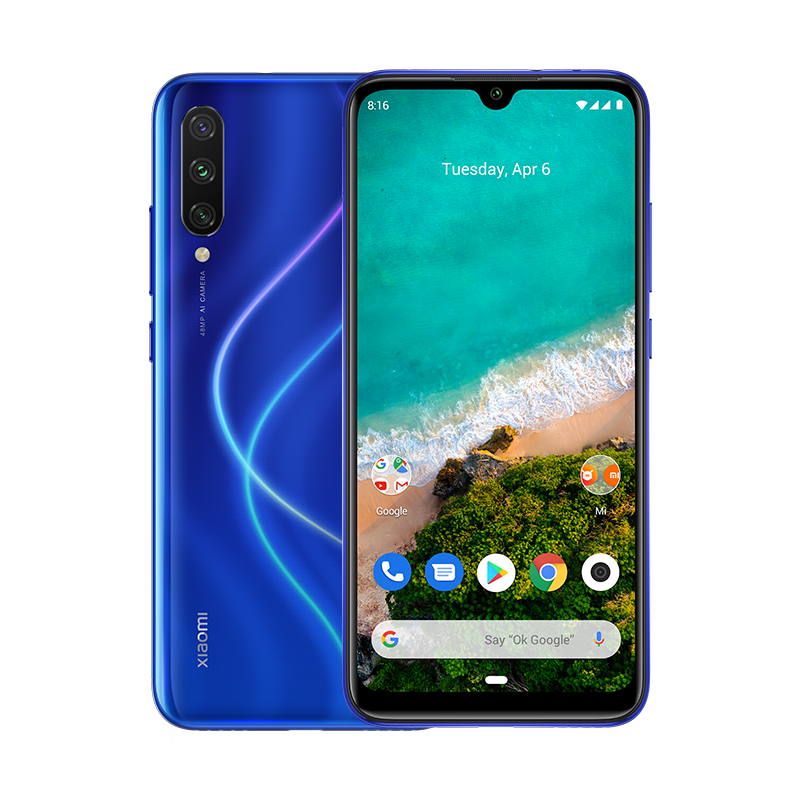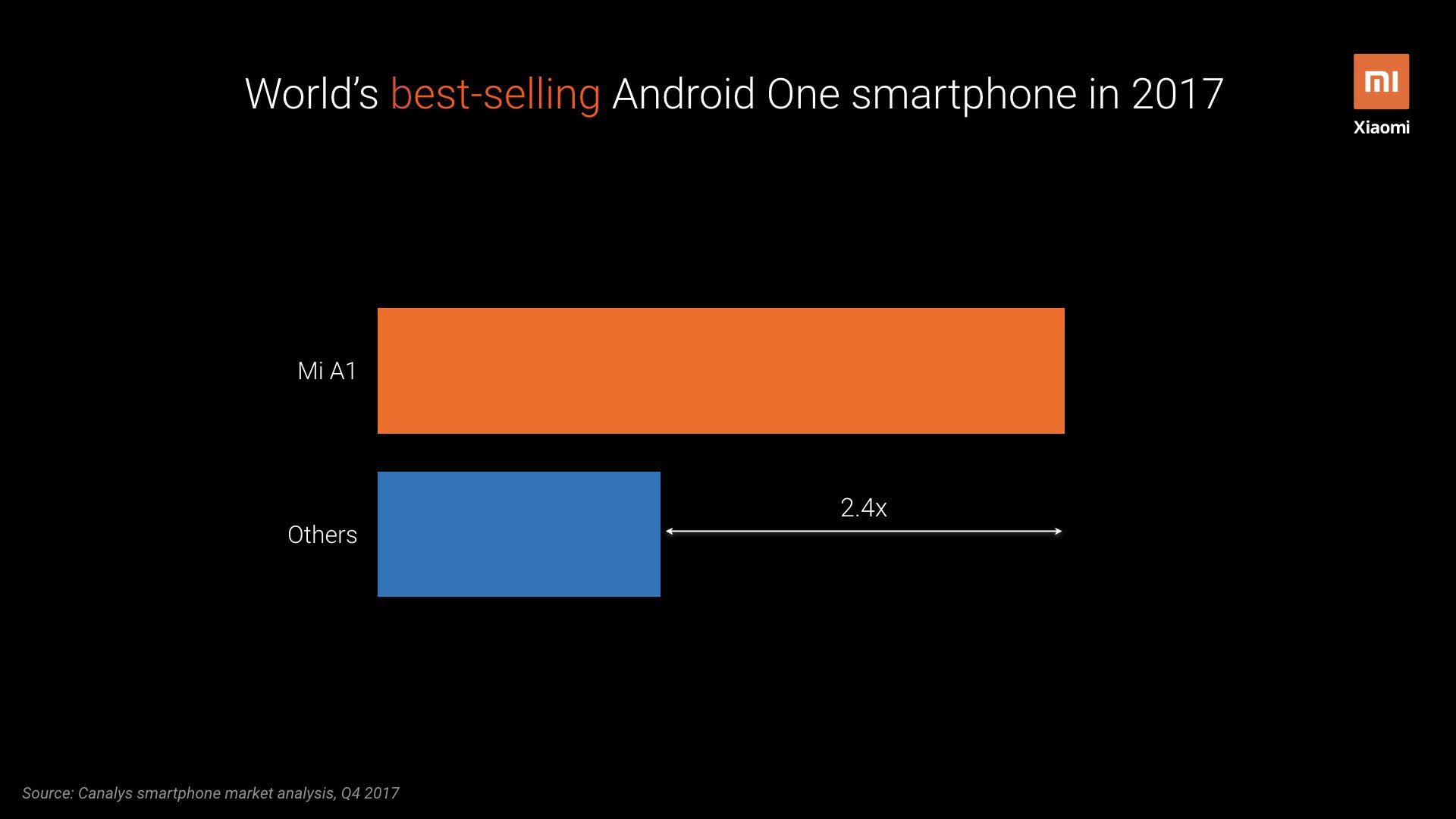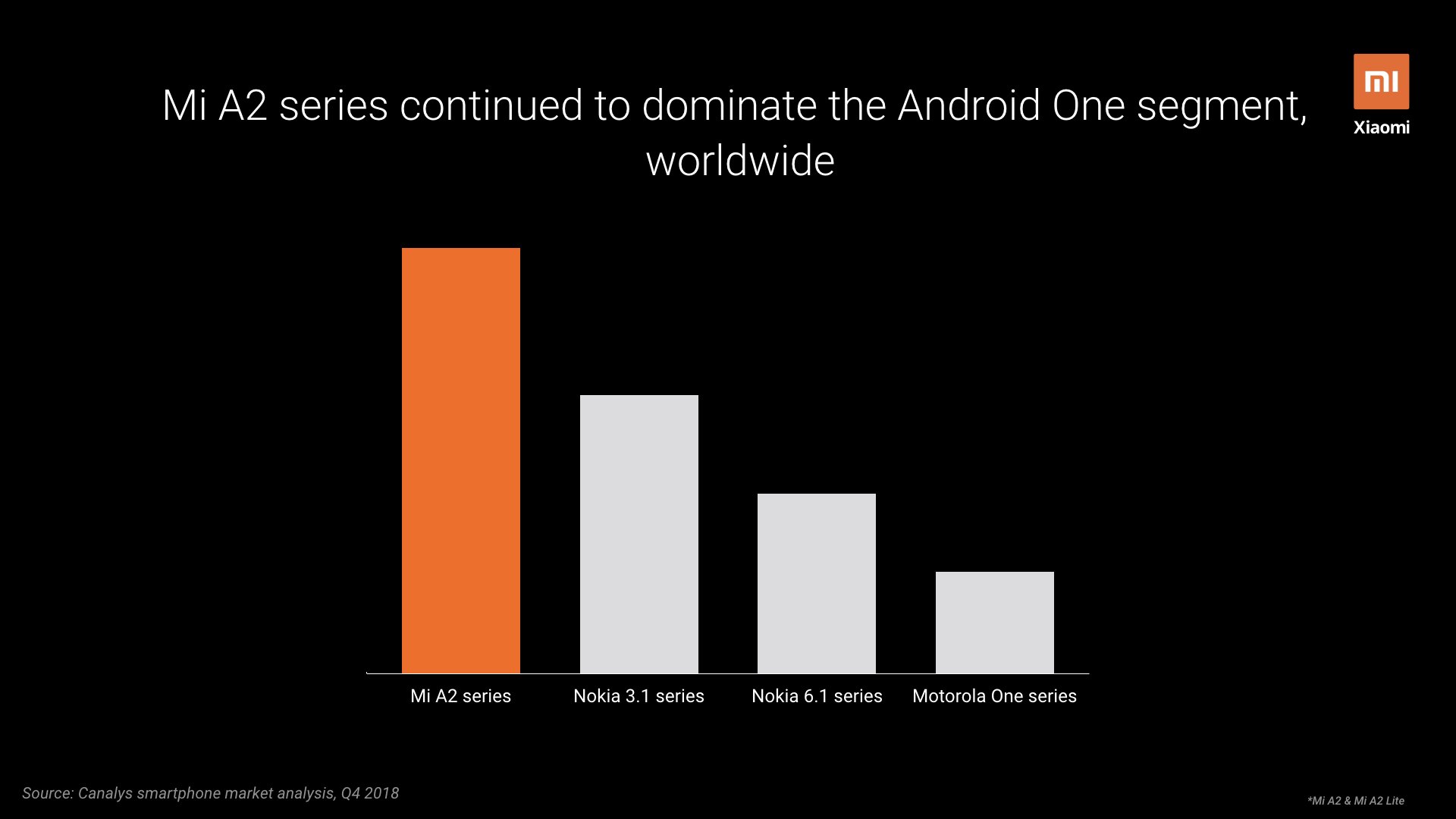
Xiaomi took an important step towards cementing its place in the global market when it launched the Mi A1 in 2017. What made the new A-series stand out was the pure Android operating system that it had onboard. Since then, Xiaomi has gone on to launch the Mi A2 and A3, all under Google’s Android One project. It has now emerged that the Mi branded models are an important part of the Android One project. In two years after its launch, the A series has achieved outstanding results.

During the Mi A3 launch, the company shared some data on the progress of the A-series. Data by market research firm Canalys shows that the sales volume of the Mi A1 in 2017 was 2.4 times more than those of other Android One handsets. In the same light, the Mi A2 sales when it was launched in 2018 was still far ahead of other Android One phones like the Nokia 3.1, Nokia 6.2 and Motorola One series. On the whole, the company says it has sold over 10 million units of the Mi A series.

We expect the Mi A3 to equally be a successful Android One phone even though it packs a disappointing HD+ display. Apart from delivering a native Android operating system, Googe’s Android One project also brings the latest software update and on time.
The Mi A1 and the Mi A2 were smart-looking devices but on the plainer side. They were not meant to make heads turn. The Mi A3 now is a very different kettle of fish. With its glass (Gorilla Glass 5) front and back, and especially the back reflecting light in different colors and patterns, it will definitely turn heads. What the heads do after turning to look at it, however, is a different matter altogether. We have shown the Mi A3 – we got the Not Just Blue variant (there’s also More Than White and Kind of Grey – someone give the person who came up the names a prize please) and while many were struck by just how dazzling the play of colors on its back was, many others felt it was just a little too blingy for comfort (they might prefer the white and grey variants). It is splash resistant incidentally – a feature that we are glad seems to be finally coming to most of Xiaomi’s phones.
Another point to note about the phone is how compact it is compared to many others. At 153.48 mm and its rounded edges, it can fit most palms easily, although, like most phones in this day and age, it will need two hands to use it quite often. Yes, it is a little on the heavy side at 174 grams, but we think the weight gives it some welcome heft. This perhaps can be attributed to its 6.08-inch display, which of course, brings us to perhaps the most debated aspect of the device…

The Mi A3’s display ticks off a couple of important boxes – it is an AMOLED one (Xiaomi’s first below Rs 15,000 in India.) and comes with an in-display fingerprint scanner and thanks to a drop notch, has relatively small bezels around it (the chin has a prominent one, though). It is a vivid display and in best AMOLED tradition, renders colors brightly. The problem is that it does so at a resolution that is definitely low by Xiaomi’s own standards- the Mi A3 is the first device in the Mi A series to not sport a full HD display. The Mi A3’s display is an HD+ one.
The big question, of course, is if this is a deal-breaker. In terms of performance, well, it isn’t. It is bright and handles colors beautifully, as we already pointed out, making games and videos an absolute joy to behold. The display being a little on the smaller side by current standards also means that the pixel density on it is greater than on something like the 6.5-inch display sporting Realme 5 (yes, a comparison is coming up). However, that cannot hide the fact that it is not as sharp as a full HD display, and sometimes one sees lesser content on a page than one would on a full HD display. It is also telling that Xiaomi itself has full HD display phones at lower prices than the Mi A3 – the Note 7S being the most noteworthy (pun totally unintended).
The display might be a bit of a disappointment to some, but the rest of the specs of the Mi A3 are unlikely to be. The phone is powered by a Qualcomm Snapdragon 665, which is below the 675 found on the (slightly more expensive) Note 7 Pro, but is capable of some reasonably heavy lifting, combined with 4 GB or 6 GB of RAM, depending on the variant you choose (you have options of 4 GB/ 64 GB and 6 GB/ 128 GB). You will spot the odd lag and stutter if you push it in PUBG and Asphalt, but in casual gaming and multitasking, it passes with flying colors.
Xiaomi also deserves credit for bringing back two features that were missing in the Mi A2 – the expandable memory card slot (you will have to forsake one of the two SIM slots for it, though) and the 3.5mm audio jack. Other connectivity options include 4G, Wi-Fi, Bluetooth, and GPS. Sound too has been improved, and while not being the best we have heard at this price point, it is decent enough for those who want to watch videos and play games minus headphones. The in-display fingerprint sensor is a little on the sluggish side, though.

The cameras, of course, have been the stars of the Mi A series. And that does not change with the Mi A3. There is a triple camera set up on the rear, comprising a 48 megapixel Sony IMX586 primary sensor with f/1.79 aperture, an 8-megapixel ultra-wide camera, and a 2-megapixel depth-sensing camera. And then there is a 32-megapixel front-facing camera, similar to the one on the selfie centered Redmi Y3. There is some serious camera hardware muscle here. And Xiaomi has fortunately accompanied it with its own camera software than the default, rather limited, Android app.
No comments:
Post a Comment